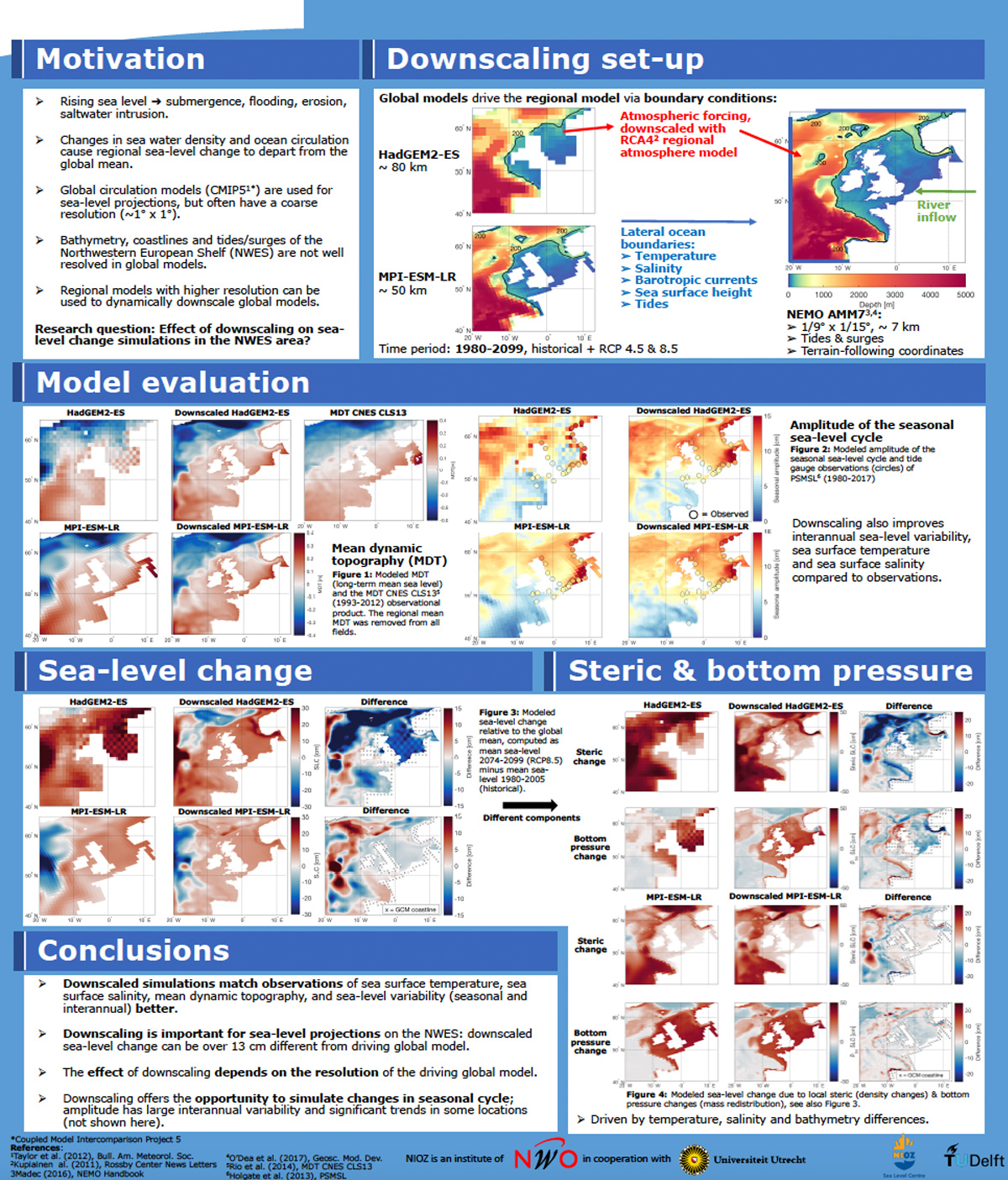Dynamical downscaling sea-level change
Dynamical downscaling sea-level change

Abstract
Regionally sea-level change (SLC) can depart significantly from the global mean. These regional deviations are the result of a number of different contributions, among which are local changes in sea water density (steric) and changes in ocean circulation (dynamic). Steric and dynamic SLC as a response to radiative forcing can be simulated with global climate models, for instance from the Coupled Model Intercomparison Project 5 (CMIP5) database. However, global climate models often do not include processes important to shallow shelf seas, have a relatively coarse horizontal resolution in the order of 100 by 100 km, and the number of vertical levels are typically limited in shallow seas. Thus, the simulations of CMIP5 models may not be adequate for SLC projections in coastal regions.
In this study we investigate the impact of high-resolution simulations of SLC processes in the Northwestern European shelf (NWES) area for coastal sea level projections. The simulations make use of the regional NEMO AMM7 CO6 coastal ocean model, driven by two example CMIP5 global models, including downscaled atmospheric surface forcings from Euro-CORDEX. The ocean model has a nominal horizontal resolution of 7 by 7 km, terrain-following vertical coordinates and includes tidal processes.
Compared to global climate model simulations, the downscaled simulations of SLC on the NWES show enhanced regional detail and have a higher correlation with satellite altimetry in terms of mean dynamic topography and sea-level variability. Projected changes in sea level over the coming century differ especially near important features in model bathymetry and coastlines, and near strong currents. Along the coast, differences in long-term change of over 13 cm are found. With the results of our study, we can begin to quantify the uncertainties in projections of SLC due to the relatively coarse resolution of global climate models. Our new projections improve the fidelity of SLC projections for European coastal regions and provide more realistic information on variability to SLC projections.
Read more +